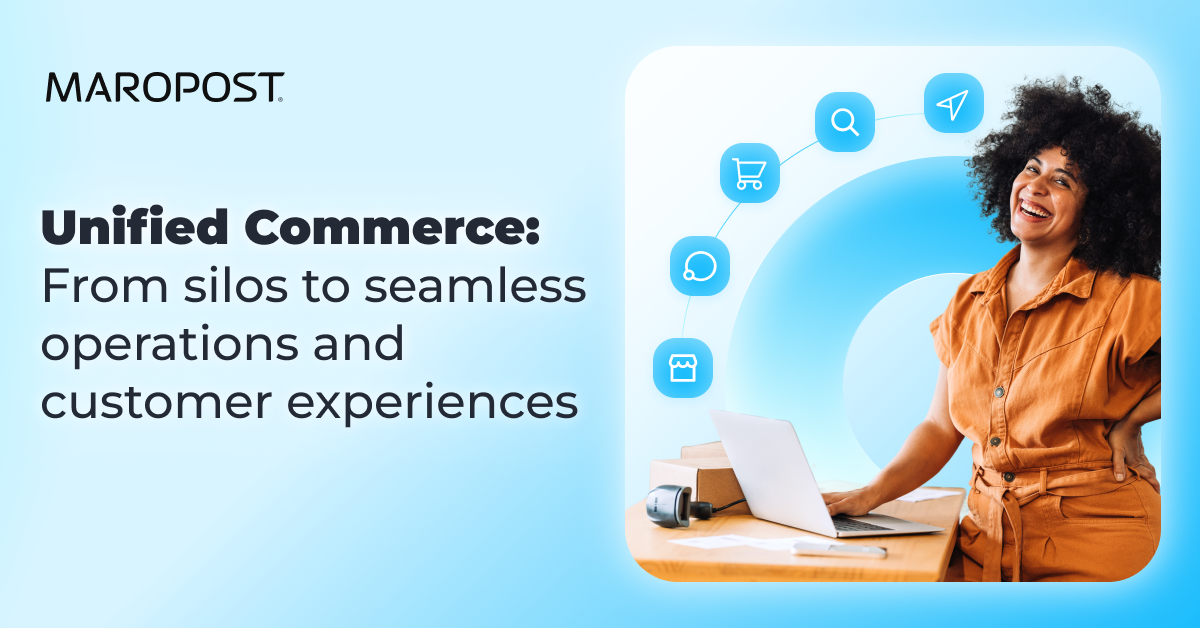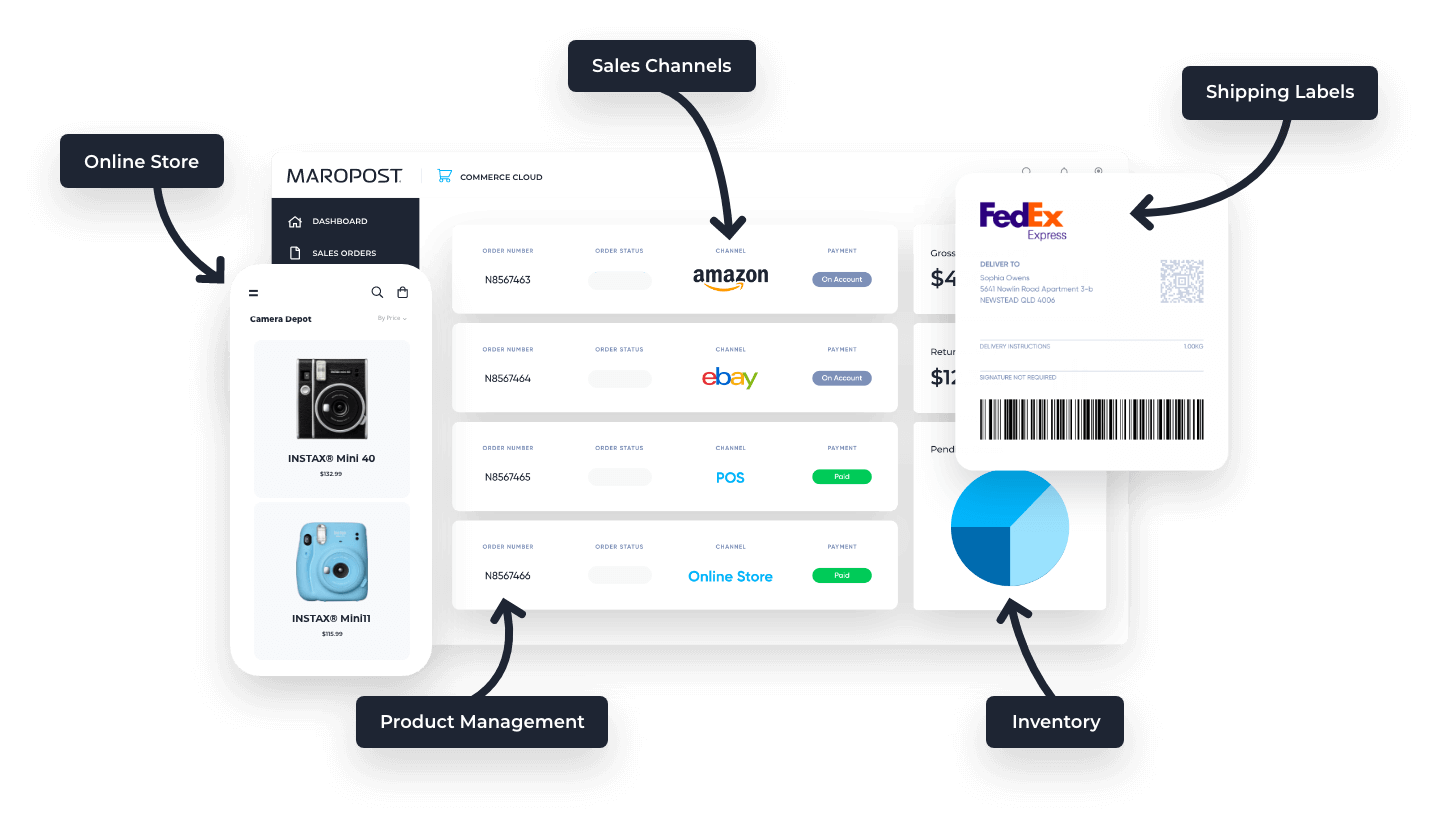Smart carts. Smart glasses. Smart mirrors. Blockchain. Drones. Biometrics. Phygital. RFID. AI. AR. VR. BNPL. Multichannel. Omnichannel.
At some point, all were called “the future of commerce.” But true transformation doesn’t come from piling on more tech. It comes from making all the components of your commerce engine work together.
That’s what unified commerce does—and now is the right time for it.
Customer expectations are at an almost unreachable high. Inflation is driving prices up and margins down. And merchants are relying on an increasingly unsteady patchwork of omnichannel software to keep their businesses running.
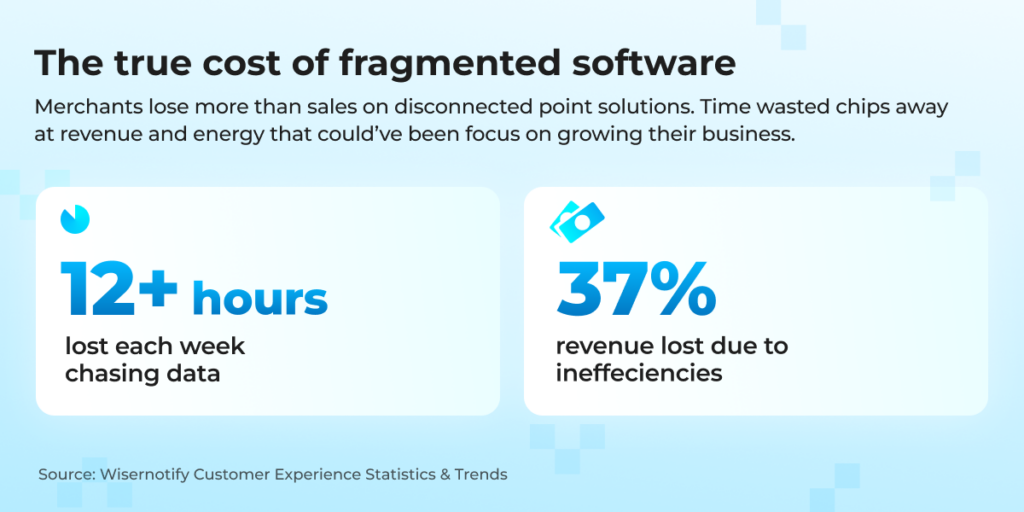
Unified platforms eliminate pain and complexity from business operations. And consolidating customer profiles and data makes it possible to actually regularly surprise and delight shoppers. And because you no longer pay for dozens of cobbled-together standalone tools, your total cost of ownership (TCO) will dramatically decrease.
Before diving deep into unified commerce’s benefits, let’s define it.
- What is Unified Commerce?
- The road to unified commerce: from single channel to omnichannel commerce and beyond
- Five key components of unified commerce platforms
- What unified commerce actually delivers
- What customer journeys can look like with unified commerce
- Who should implement unified commerce strategies?
- Why the future of retail starts now
What is unified commerce?
Unified commerce simplifies operations by natively centralizing core retail and ecommerce software and backend systems into a single, seamless platform. The opposite of a tech stack, it eliminates silos and syncs commerce, support, and marketing data in real time. It creates a level of customer data integration that helps you get a full view of every shopper’s journey and make decisions around a single source of truth.
For customers, unified commerce makes frictionless experiences possible. Shoppers can switch from browser to app and aisle and back again. Whether they check out in-store or online, their cart, offers, and rewards tag along, all the way through the final step in their journey.
These promises may sound a little familiar. Multichannel and omnichannel commerce were revolutionary in their time, each connecting brands and customers in ways that weren’t previously possible. But omnichannel platforms never delivered seamlessly synced operations and experiences.
Unified commerce does.
Technology has finally caught up to the promise of unified commerce. That’s why it’s such a giant leap in the centuries-old evolution of store operations and customer experiences.
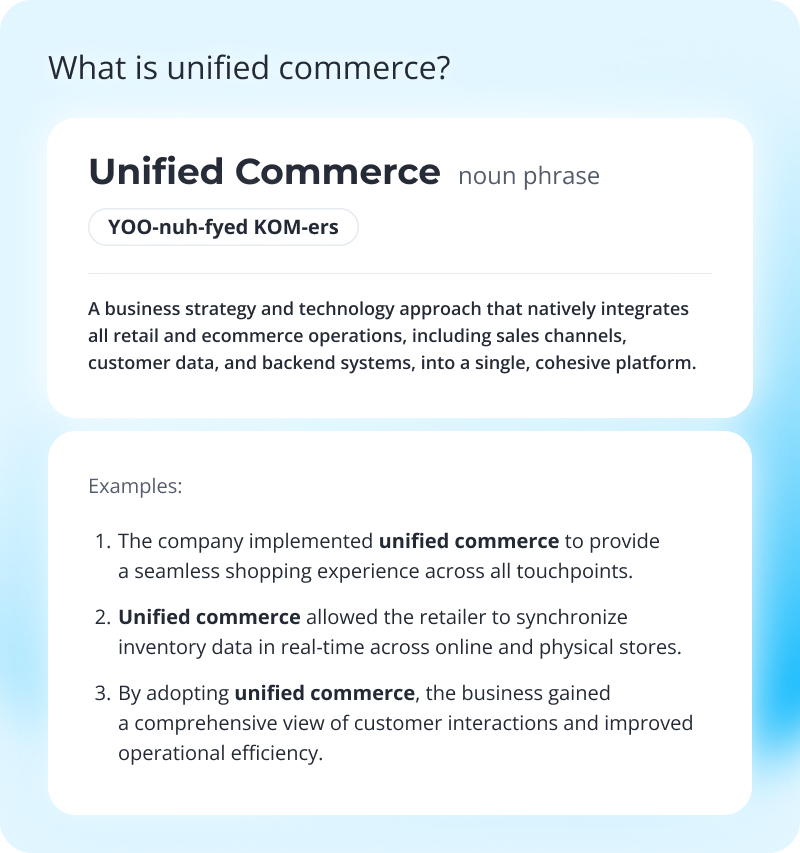
The road to unified commerce: from single channel to omnichannel commerce and beyond
Thousands of years ago, retail was easy. Merchants displayed their wares—clothing, spices, tools—and traded them for something else. Then coins became a thing and commerce got complicated.
Ancient Turkish, Greek, and Roman retailers were strictly single-channel: They had only one storefront (probably a stall or a mat). Today, single-channel commerce businesses might run a brick and mortar store, online boutique, or TikTok shop. Regardless, successful single-store brands aren’t usually satisfied being single-store brands for long.
They branch out. And when they do, they must decide which commerce strategy is best for their business—and their customers.
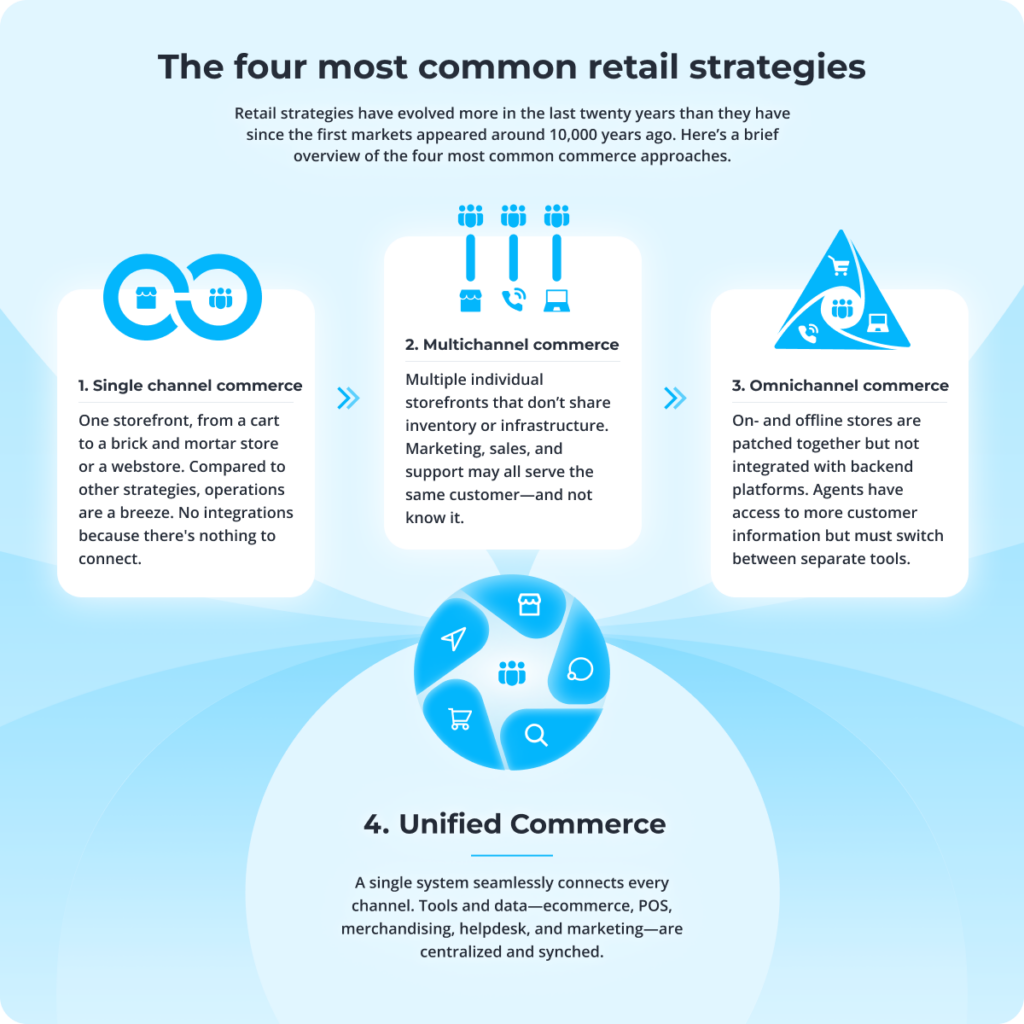
Multichannel commerce: different storefronts, same customer?
Entrepreneurs are hardwired to build on success. That’s why single-channel businesses open new locations, launch websites, or expand into online marketplaces like Amazon, eBay, and Etsy. Those new channels are siloed in multichannel commerce, creating new challenges for businesses and their customers.
Because each location or channel manages its own inventory and infrastructure, owners and representatives can’t access all the information they need to make sound decisions or satisfy (much less delight) customers. In fact, sales, marketing, and support may all interact with the same customer—and not know it.
And when a customer feels a once-trusted business no longer knows them, they leave for one that does.
Omnichannel commerce: connected but fragmented
Then the omnichannel commerce platform arrived to save the day—sort of. On the surface, consistent cross-channel branding, automated workflows, and messaging may seem seamless. But deeper down, omnichannel systems are mostly patched together with APIs, resulting in data that’s delayed, inconsistent, and inaccurate.
The omnichannel customer experience is a big improvement over multichannel ones: Customers can research products online, check in-store product availability before visiting, or buy online and pick them up curbside. But the lack of reliable, real-time, cross-channel integration is costly.
When businesses rely on separate point solutions for core functions—the case with omnichannel approaches—it’s time-intensive and costly. Instead of serving customers, they chase data. Instead of a single software invoice, they pay dozens. And the cost of all those add-ons, apps, and tools adds up fast.
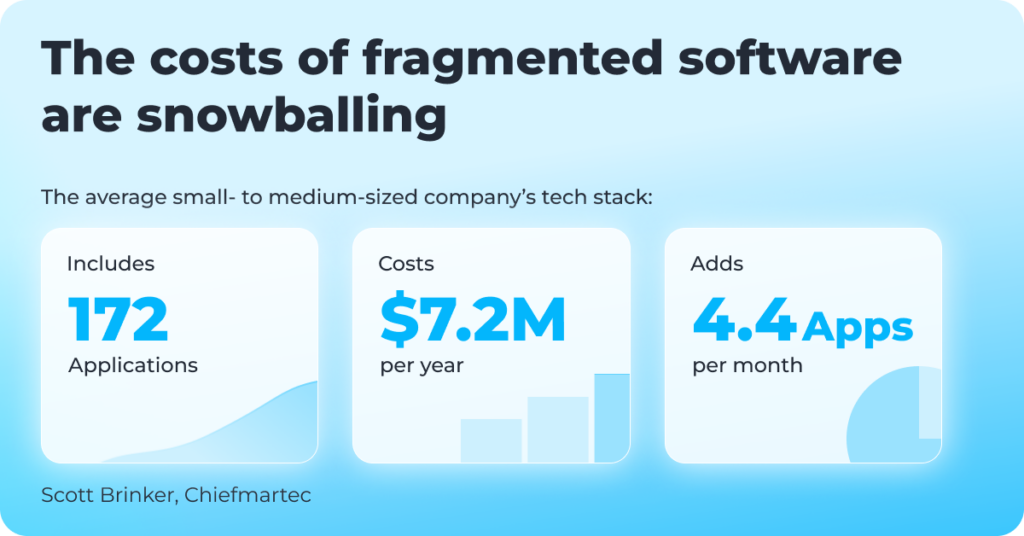
Omnichannel vs. unified commerce: from siloed to synced
What’s the difference between omnichannel and united commerce? Unified commerce centralizes front- and back-office operations on a single platform. This eliminates the shortcomings of omnichannel platforms. Data flows freely in real time from tool to tool. Businesses gain a single source of truth for inventory, transactions, tickets, and interactions. Sales, support, and marketing teams share a single, unified profile for each customer.
Five key components of unified commerce platforms
Although most unified platforms share common components, not all are created equal. Here’s what the best unified commerce platforms have in common.
1. Ecommerce software
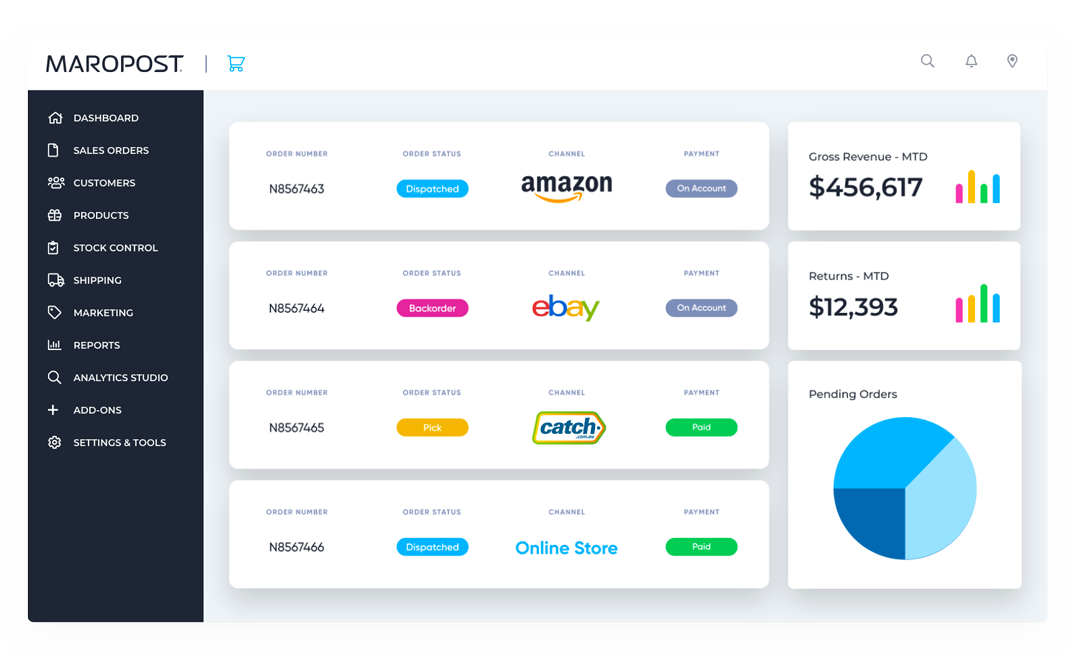
If you want to sell products and services online, you need ecommerce software. It manages every aspect of digital commerce operations, from storefront creation to product, inventory, order management, checkout, and payment processing. Ecommerce software also consolidates customer data, purchase history, and preferences.
2. Point of sale software

Retailers with brick and mortar stores use point of sale (POS) software to process in-person transactions and manage operations. Like ecommerce software, POS software optimizes product, inventory, and order management systems. It also connects customer data, loyalty programs, and purchase histories to help personalize service.
3. Search and merchandising software
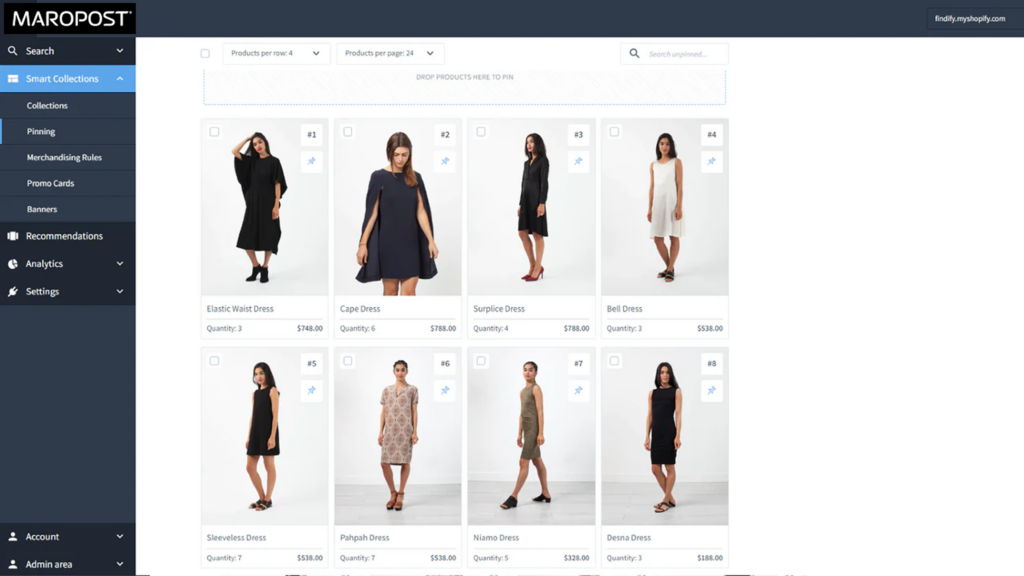
Search and merchandising software is one of the most practical uses of AI in ecommerce. It helps shoppers instantly find what they’re looking for. It makes discovery fast and seamless by dynamically recommending products based on each shopper’s real-time behaviors, interactions, and purchases. Merchandisers can automate collections based on bestsellers, high-margin items, or promotions.
4. Service software
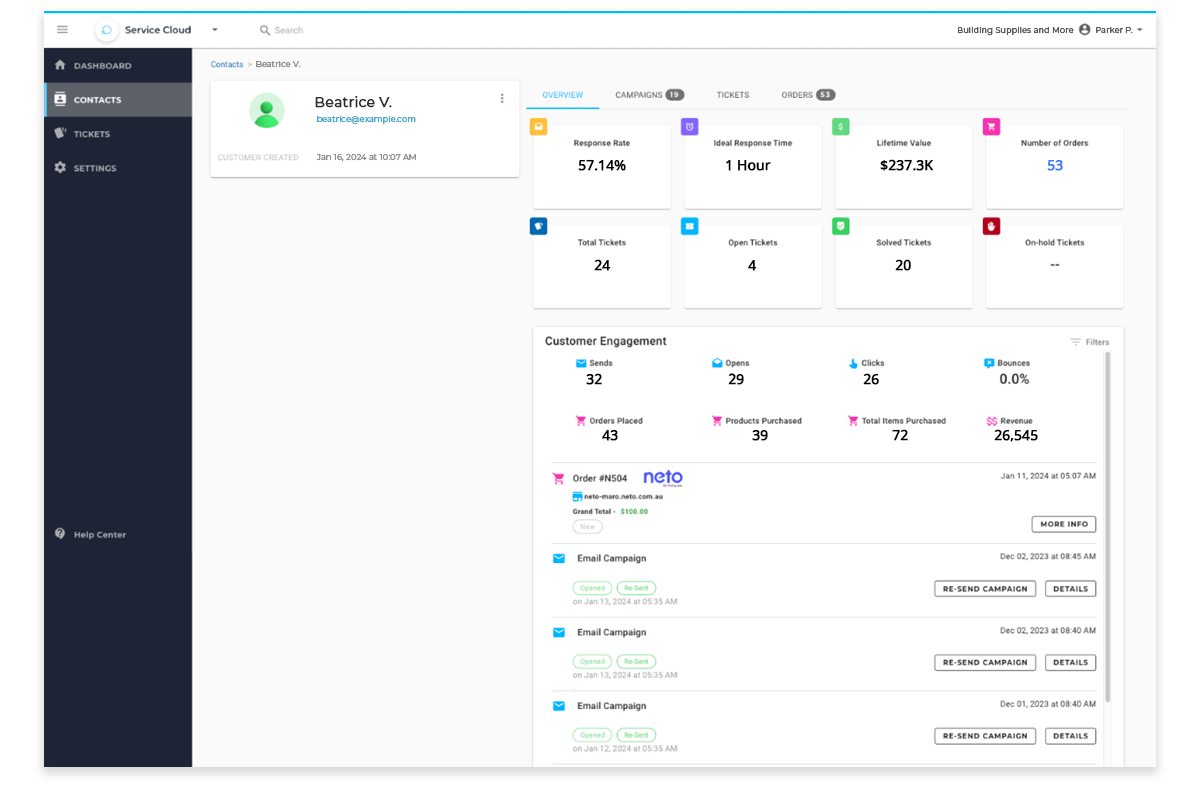
In an increasingly crowded and competitive commerce landscape, you’ve got to make the most of every interaction. Service software can give agents the resources they need to keep customers happy by unifying data across each customer profile. Helpdesk tools can also help agents discover opportunities to upsell and cross-sell the right products at the right times.
5. Marketing automation software

When you’re starting out, basic email software is fine. But as you grow, you need robust marketing automation for retail and ecommerce that gives you complete control over your email, SMS, and social media campaigns. To boost conversion the easy way, look for marketing and ecommerce automation tools that feature automated personalization and AI-powered, eRFM (Enhanced Recency, Frequency, Monetary) behavioral insights.
Unified platforms bring all these commerce tools together
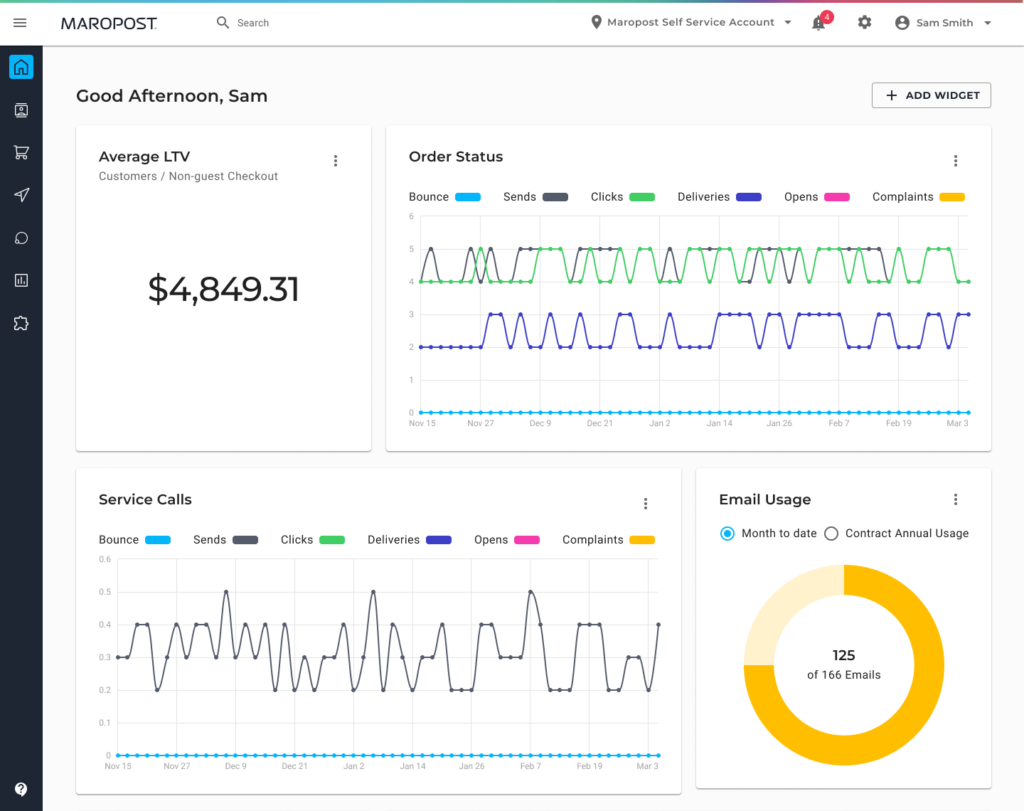
You won’t be a successful commerce brand without these five tools. But you’ll be an even more successful commerce brand if they’re collected and connected in a seamless, unified platform. No more swiveling between POS and ecommerce software to see if an item’s in stock. No more customers with separate sales, service, and marketing profiles. And no more missed opportunities because of what you couldn’t do or didn’t know about your customers.
Why your commerce platform needs native marketing automation
Want to know a secret? Many unified platforms only “unify” ecommerce and POS software. That means more often than not, marketing automation requires buggy third-party integration. Here’s what you’ll miss out on if personalized marketing automation isn’t native to your commerce platform.
Consolidated marketing, sales, and service profiles
Although it’s certainly unfortunate, it’s not uncommon for marketers, sales, and service staff to share customers and not know it. A real-time, single source of truth for every customer experience with your brand, available to everyone who serves them.
Campaigns that can’t miss
When a commerce platform unifies marketing efforts and merchandising, campaigns can tap real-time shopping, purchasing, and behavioral information. Harnessing search and discovery data empowers marketers to build email, SMS, and mobile app campaigns with seemingly bespoke product recommendations.

Curated customer journey optimization
With marketing and commerce journeys sharing a platform, each marketing campaign will automatically be much more effective. That’s because real-time, consistent data across all touchpoints—ecommerce, POS, CRM, email, social, and SMS—make segments more precise and personalization more personal.
Customer experiences that keep them coming back
Customer experience optimization is key to growing an ecommerce business, and fragmented data limits experiences. Unifying marketing and commerce data helps brands deliver cohesive, memorable—and even delightful—experiences that keep customers coming back and referring friends.
Native marketing automation also enables personalized, behavior-triggered messaging (cart abandonment, post-purchase follow-ups, etc.) based on real-time purchase data. Unified commerce helps you build customer retention strategies that keep brands top of mind.
A brand experience that’s consistent and impactful
Marketing and commerce unification makes sure all touchpoints deliver a cohesive, consistent brand message. Marketers can orchestrate campaigns effortlessly, ensuring consistent branding, pricing, and promotions across all channels.
Teams that are nimble, informed, and empowered
With an all-native integration, marketing and commerce teams can launch cross-channel campaigns without waiting for IT support or dealing with API limitations. You can also react to trends and performance data faster, like adjusting promotions or launching segmented campaigns instantly.
Accurate attribution and timely insights
Marketing attribution becomes more accurate when all commerce and marketing data live in one ecosystem. Plus, businesses get deeper customer journey analytics, insights on campaign performance, and revenue impact without switching between separate dashboards—all facts, no friction. Unified commerce platforms with built-in ecommerce analytics enables smarter, data-driven decision making.
What customer journeys can look like with unified commerce
In a remarkably short time, unified commerce has redefined what’s possible for merchants and their customers in stores and online. Common real-world examples include Buy Online, Pick Up In-Store (BOPIS) and cross-channel returns (buy online, return in store, or vice versa). Here are a few more.
Just-right recommendations
A long-time customer’s in the market for a new pair of running shoes. They start their search on your store’s website and the results surprise them. It’s like you know exactly what they’re looking for.
Because you do. Your site surfaces hyper-personalized recommendations based on their browsing history, previous purchases, and preferences.
Unified tools: ecommerce, POS, merchandising, service
Reliable real-time inventory
It’s her grandson’s third birthday, and Nana just thought of the perfect present. With no time to waste, she checks your brand’s website for the item. Luckily, two nearby locations have the item in stock. With no time to spare, she drives to the closest one, bags the gift, and delights its recipient.
Real-time inventory is why neither Nana nor her grandson were disappointed. It builds loyalty, trust, and positive word of mouth.
Unified tools: ecommerce, POS, merchandising

Consistent pricing and promotions
An email offers a deep discount on a jacket your customer’s had their eye on for months. They click through to your store to confirm it’s not too good to be true. They visit your store to try it on. Checking the tag on their way to the dressing room, they see the offer applied. It’s a perfect fit, and the price is right.
Unified commerce ensures pricing and discounts are consistent across channels so shoppers don’t leave your site or store frustrated.
Unified tools: ecommerce, POS, merchandising, marketing
Connected cross-channel carts
A shopper spots an item they like on their smartphone and adds it to their cart. Later, they notice it’s still in their cart while browsing your store on their laptop. A couple of days later, they visit the service counter at your store to return an item, and the associate offers to help them complete the purchase. A few days later, it arrives at their doorstep.
Unified tools: ecommerce, POS, merchandising, marketing, service
Who should implement unified commerce strategies?
Or more specifically, should you consider unified commerce for your fast-growing commerce empire? If you answer “yes” to two or more of these questions, it’s time to explore your options.
Is at least some of your commerce data siloed?
- Is customer data fragmented across different systems?
- Do you lack a unified view of customer behavior and preferences?
- Do you have business-wide real-time access to customer or operations data?
Are operational inefficiencies holding you back?
- Are inventory levels or pricing inconsistent across different channels?
- Do you have trouble managing and fulfilling orders across platforms?
- Are your sales, marketing, and support communications siloed?
Are your customer experiences meeting expectations?
- Do customers frequently ask about product availability?
- Are they frustrated by inconsistent experiences?
- Can you personalize interactions across all interactions and touchpoints?

Is fragmented software preventing growth?
- Are you exploring new channels or locations?
- Can you use ecommerce data for email personalization?
- Are the software and tools you use built to scale as you expand?
Are your competitors using a unified commerce platform?
- Do competitors offer more seamless shopping experiences?
- If not, are you sure they’re not planning to switch to unified commerce?
Why the future of commerce starts now
The future of commerce is unified. And as online shopping trends evolve, it’s not about keeping up—it’s about staying ahead. As brands navigate an increasingly complex digital landscape, the need for a unified commerce solution has never been greater. By eliminating fragmented systems and embracing seamless integration, businesses can unlock operational efficiency, drive revenue, and create experiences that keep customers coming back.
One of the biggest advantages of this shift is the role of marketing automation in unified commerce. With real-time access to customer data across all touchpoints, brands can deliver hyper-personalized messaging, optimized product recommendations, and targeted promotions—all without the friction of disconnected software. This level of intelligence ensures that every interaction feels relevant, timely, and valuable.

At the heart of it all is the seamless customer experience across all channels. Whether a shopper browses online, purchases in-store, or engages via social media, their journey should be effortless and consistent. A truly unified commerce strategy bridges these interactions, providing customers with the convenience they expect and businesses with the insights they need to grow.
Retail and ecommerce digital transformation is real. Success today isn’t just about selling—it’s about building relationships, streamlining operations, and adapting to change. And with the right unified commerce solution, the possibilities are limitless.
Are you ready to future-proof your business? Request a Maropost demo and ask about what’s next for unified commerce.

FAQ: Unified commerce
What is unified commerce?
Unified commerce is a business strategy that integrates all sales channels, customer touchpoints, and backend systems into a single, cohesive platform. This approach ensures a seamless shopping experience across online, offline, and mobile channels while streamlining operational efficiency.
How is unified commerce different from omnichannel commerce?
While omnichannel commerce pioneered consistent customer experience across multiple channels, unified commerce goes further by integrating all backend systems (e.g., inventory management, merchandising, marketing, service, POS) in real time. This means customers get consistently delightful experiences, and all operational data is synched across each channel.
What are the key benefits of unified commerce?
- Streamlined operations: Centralizes data, automates tasks, and reduces manual errors.
- Increased revenue: Enables targeted marketing and personalized product recommendations based on real-time customer data.
- Next-level customer experience: Provides a seamless and personalized shopping journey across all touchpoints.
- Unified profiles and analytics: Offers a holistic view of customer behavior and operational performance for better-informed decisions
- Lower total cost of ownership: The costs of separate software, apps, and tools add up fast. Plus, you pay for features you don’t need or use.
What components make up a unified commerce platform?
A unified commerce platform typically includes:
- Ecommerce software: online sales channels
- POS software: brick and mortar stores
- Search and merchandising software: product and service discovery
- Service software: helpdesk, up-, and cross-selling tools
- Marketing automation software: Manage email, SMS, and social media campaigns
How does unified commerce support personalization?
By centralizing customer data, unified commerce platforms create personalized experiences. This includes tailored product recommendations, targeted promotions, and consistent messaging across all channels based on customer purchases, behaviors, and preferences.
What are some examples of unified commerce in action?
Examples of unified commerce include:
- Real-time inventory updates: Ensures product availability is accurate across all channels so customers aren’t disappointed.
- Hyper-personalized recommendations: Delivered via email or site search, recommendations based on past purchases, preferences, browsing histories, and more.
- Consistent pricing and promotions: From brick and mortar stores to online shops, social media, and email, pricing and discounts are the same.
- Buy Online, Pick Up In-Store (BOPIS): Customers can purchase online and pick up their orders in-store.
- Cross-channel returns: Customers can return online purchases in-store or vice versa.
How does unified commerce improve operational efficiency?
Unified commerce streamlines operations by:
- Centralizing Data: Provides a single source of truth for inventory, customer profiles, and transactions.
- Automating Tasks: Reduces manual data entry and inventory checks.
- Minimizing Errors: Ensures consistent pricing and promotions across channels.
How does unified commerce support future growth?
Because they replace patchworks of fragmented software, unified commerce platforms easily allow businesses to grow, scale, and adopt emerging channels and tech.
Need to chat about your mobile marketing strategy?
More than 10,000 marketers use Maropost to engage with their prospects and customers through emails, SMS, social media and more. We’re here to help you grow your business!
Chat Now
